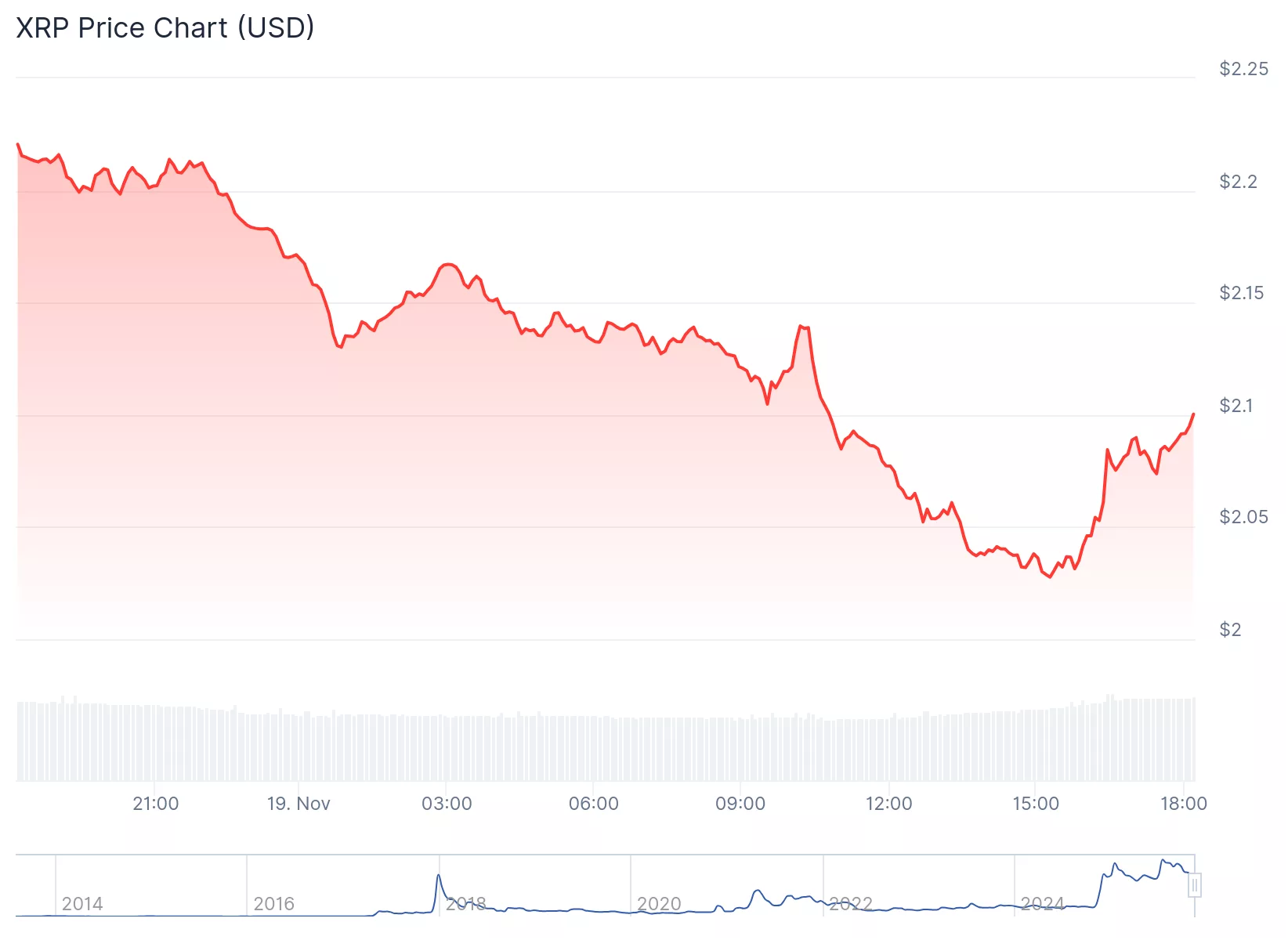Ripple, XRP eyes staking as Canary Capital ETF sparks new investor interest
Ripple’s XRP Ledger is reportedly undergoing a strategic shift amid calls from the community for native staking capabilities.
- Zcash almost tripled in value in less than a month
- According to Ran Neuner, there has been a coordinated push by key influencers
- Tyler and Cameron Winklevoss, and Arthur Hayes recently spoke about Zcash
The development follows the recent launch of the Canary Capital ETF , which recorded significant trading volume on its first day, according to market data.
The two events indicate XRP is expanding beyond its traditional payments-focused operations toward broader investment applications, industry observers noted.
The XRP Ledger community has been discussing implementing native staking features, which would align the platform more closely with decentralized finance (DeFi) protocols currently operating on other blockchain networks.
Ripple has not issued an official statement regarding the timeline or technical specifications for potential staking implementation on the XRP Ledger.
Singing Canary’s praises
The Canary Capital ETF is one of the first exchange-traded funds focused on XRP, providing traditional investors with regulated exposure to the digital asset.
It generated $58 million in first-day trading, slightly surpassing Bitwise’s BSOL ETF , which launched last month with $57 million. The activity places XRPC among the top-performing ETFs of 2025, far ahead of most of the roughly 900 funds launched this year.
The fund’s debut came amid a shaky crypto market, with Bitcoin dipping below $99,000 and total market capitalization falling about 3.5% to $3.43 trillion. Yet trading in XRPC was robust, with $26 million exchanged in the first 30 minutes and over $36 million by mid-morning, including rapid transactions on Robinhood.
XRPC is a physical spot ETF holding only XRP, tracking the token’s price via the CME CF XRP-USD Reference Rate. The fund carries a 0.50% annual fee and uses Gemini Trust and BitGo Trust for custody.
Canary Capital, a Tennessee-based digital asset firm with prior Bitcoin, Ethereum, and HBAR ETFs, positions XRPC as a convenient way for institutions to access XRP’s utility in cross-border payments without managing wallets or custody. Analysts note that demand for payment-linked tokens is rising, as reflected in Canary’s HBAR ETF raising $70 million in its first week.
At last check, XRP was trading at around $2.10, down 5.4% for the day.
 Source: CoinGecko
Source: CoinGecko
Disclaimer: The content of this article solely reflects the author's opinion and does not represent the platform in any capacity. This article is not intended to serve as a reference for making investment decisions.
You may also like
Bitcoin News Update: SoftBank's PayPay Connects Japan's Conventional Finance with the Crypto Sector

Adherence to regulations and rapid transaction speeds are driving the widespread adoption of cryptocurrency in mainstream business.
- OwlTing Group's "Invisible Rails" strategy enables rapid deployment of compliant crypto gateways via global licensing across Asia and Latin America. - Opera's MiniPay expands Latin American reach by integrating USD₮ stablecoins with local payment systems like PIX and Mercado Pago. - Grayscale rebrands XRP Trust as GXRP ETF, reflecting growing institutional demand for regulated crypto exposure in global markets. - Industry analysis highlights blockchain's convergence with AI data infrastructure, emphasizi

DASH Experiences a Rapid 150% Jump in Value: Unpacking the Causes Behind the Price Fluctuation
- DASH surged 150% in Q3 2025 after listing on Aster DEX, a hybrid AMM-CEX platform boosting liquidity and attracting institutional interest. - Dash Platform 2.0 upgrades, enhanced privacy features, and SEC regulatory clarity positioned DASH as a stable alternative to volatile DeFi assets. - On-chain metrics showed 50% higher transaction volume and 35% more active addresses, though privacy tools like PrivateSend obscured organic growth verification. - Cybersecurity breaches and whale-driven volatility in l
Vitalik Buterin's Advances in Zero-Knowledge Technology: Driving Ethereum's Growth and Enhancing Investor Profits
- Vitalik Buterin advances Ethereum's ZK innovations, prioritizing scalability and efficiency through Layer 2 upgrades like ZKsync's 15,000 TPS Atlas upgrade. - ZK Stack bridges Ethereum's security with off-chain efficiency, driving 150% token price growth and a projected $90B ZK Layer 2 market by 2031. - Modexp precompile removal increases gas costs but optimizes ZK proofs, reflecting Buterin's focus on long-term sustainability over short-term savings. - Investors face high-reward opportunities as ZK-cent
